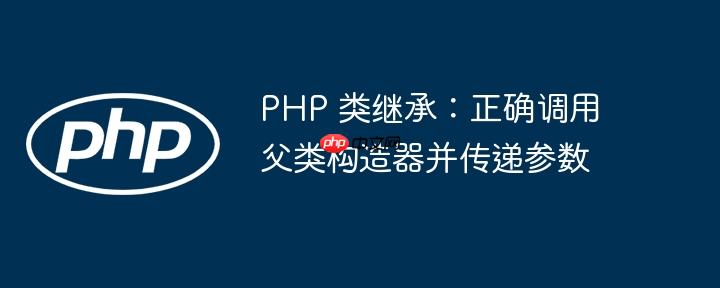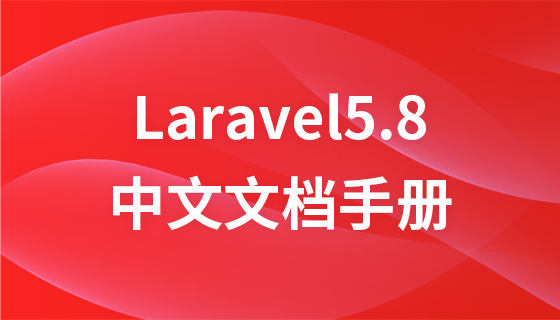
在php面向对象编程中,继承是一种强大的机制,允许一个类(子类)获取另一个类(父类)的属性和方法。构造器 (__construct 方法) 在对象实例化时执行初始化逻辑,它在继承体系中有着特殊的行为:
开发者在子类中调用 parent::__construct() 时,一个非常常见的错误是忽略了父类构造器可能需要的参数。当父类构造器被定义为需要一个或多个参数时,如果在子类中调用 parent::__construct() 时没有提供这些参数,PHP 将会抛出 Missing argument 或 Too few arguments 类型的运行时错误。
例如,考虑以下场景:
父类构造器定义如下,它需要一个 $documentTemplate 参数:
class ParentClass
{
public function __construct($documentTemplate)
{
// 模拟父类初始化逻辑,需要 $documentTemplate
if (empty($documentTemplate)) {
throw new InvalidArgumentException("Document template cannot be empty.");
}
echo "Parent constructor initialized with template: " . $documentTemplate . "\n";
// ... 更多初始化代码,例如文件操作
}
}如果子类尝试这样调用父类构造器:
立即学习“PHP免费学习笔记(深入)”;
class ChildClass extends ParentClass
{
public function __construct($documentTemplate)
{
// 错误示例:父类构造器需要 $documentTemplate 参数,但这里没有传递
parent::__construct();
echo "Child constructor initialized.\n";
}
}
// 尝试实例化
// $child = new ChildClass("path/to/template.docx");
// 这将导致 Fatal error: Uncaught ArgumentCountError: Too few arguments to function ParentClass::__construct()这种情况下,尽管子类构造器接收了 $documentTemplate 参数,但它并没有将其转发给父类构造器,导致父类构造器因缺少必要参数而报错。
解决这个问题的关键在于,将子类构造器接收到的、父类构造器所需的参数,原封不动地传递给 parent::__construct()。这样,父类构造器就能接收到它期望的参数,并完成其自身的初始化工作。
class ChildClass extends ParentClass
{
public function __construct($documentTemplate)
{
// 正确示例:将 $documentTemplate 参数传递给父类构造器
parent::__construct($documentTemplate);
echo "Child constructor initialized.\n";
}
}
// 实例化子类
// $child = new ChildClass("path/to/template.docx");
// Output:
// Parent constructor initialized with template: path/to/template.docx
// Child constructor initialized.为了更好地理解和应用这一原则,我们来看一个更完整的示例,模拟文档处理类库的继承场景:
<?php
// 父类:基础文档处理器
class BaseDocumentProcessor
{
protected string $templatePath;
protected string $tempFilePath;
/**
* 构造函数:初始化文档模板路径和临时文件
* @param string $documentTemplatePath 文档模板的实际文件路径
* @throws InvalidArgumentException 如果模板文件不存在
* @throws RuntimeException 如果无法创建或复制临时文件
*/
public function __construct(string $documentTemplatePath)
{
if (!file_exists($documentTemplatePath)) {
throw new InvalidArgumentException("文档模板不存在: " . $documentTemplatePath);
}
$this->templatePath = $documentTemplatePath;
// 创建一个唯一的临时文件用于处理
$this->tempFilePath = tempnam(sys_get_temp_dir(), 'doc_proc_');
if ($this->tempFilePath === false) {
throw new RuntimeException("无法创建临时文件.");
}
if (!copy($documentTemplatePath, $this->tempFilePath)) {
throw new RuntimeException("无法将模板复制到临时文件: " . $this->tempFilePath);
}
echo "父类构造器:已初始化模板 '" . basename($this->templatePath) . "' 并创建临时文件 '" . basename($this->tempFilePath) . "'\n";
}
public function getTemplatePath(): string
{
return $this->templatePath;
}
public function getTempFilePath(): string
{
return $this->tempFilePath;
}
/**
* 模拟文档处理方法
*/
public function process(): void
{
echo "父类处理方法:正在处理临时文件 '" . basename($this->tempFilePath) . "'\n";
// 实际的文档处理逻辑,例如解析、替换内容等
}
/**
* 析构函数:清理临时文件
*/
public function __destruct()
{
if (file_exists($this->tempFilePath)) {
unlink($this->tempFilePath);
echo "父类析构器:已删除临时文件 '" . basename($this->tempFilePath) . "'\n";
}
}
}
// 子类:针对特定框架(如Laravel)的文档处理器,可能需要额外配置
class FrameworkDocumentProcessor extends BaseDocumentProcessor
{
protected array $config;
/**
* 子类构造函数:除了模板路径,还需要一个配置数组
* @param string $documentTemplatePath 文档模板路径
* @param array $config 框架特定的配置
*/
public function __construct(string $documentTemplatePath, array $config = [])
{
// 核心步骤:首先调用父类构造器,并传递其所需的参数
parent::__construct($documentTemplatePath);
// 子类特有的初始化逻辑
$this->config = $config;
echo "子类构造器:已初始化额外配置 " . json_encode($this->config) . "\n";
}
public function getConfig(): array
{
return $this->config;
}
/**
* 子类可以扩展或覆盖父类的处理方法
*/
public function process(): void
{
echo "子类处理方法:应用框架特定逻辑...\n";
parent::process(); // 可以选择调用父类的处理方法
echo "子类处理方法:额外处理完成。\n";
}
}
// --- 示例使用 ---
try {
// 1. 创建一个虚拟的模板文件用于演示
$dummyTemplatePath = sys_get_temp_dir() . '/my_report_template.docx';
file_put_contents($dummyTemplatePath, '这是一个模拟的文档模板内容。');
echo "创建模拟模板文件: " . $dummyTemplatePath . "\n\n";
// 2. 实例化子类
$processor = new FrameworkDocumentProcessor(
$dummyTemplatePath,
['user_id' => 456, 'output_format' => 'pdf']
);
echo "\n";
echo "通过处理器获取模板路径: " . $processor->getTemplatePath() . "\n";
echo "通过处理器获取临时文件路径: " . $processor->getTempFilePath() . "\n";
echo "通过处理器获取配置: " . json_encode($processor->getConfig()) . "\n";
// 3. 执行文档处理
$processor->process();
echo "\n";
// 4. 清理演示用的模板文件
unlink($dummyTemplatePath);
echo "已删除模拟模板文件: " . $dummyTemplatePath . "\n";
} catch (Exception $e) {
echo "发生错误: " . $e->getMessage() . "\n";
}
?>// 示例:谨慎使用
public function __construct(...$args) {
parent::__construct(...$args); // 将所有参数转发给父类
// ... 子类自己的逻辑
}除非你确切知道父类构造器的参数是动态的或不固定的,否则明确列出并传递参数是更好的选择。
正确处理PHP类继承中的构造器调用是编写健壮、可维护代码的关键。核心原则是:当子类定义了自己的构造器且父类构造器需要参数时,务必通过 parent::__construct() 显式地将这些参数传递给父类。理解并遵循这一机制将有效避免常见的运行时错误,并确保继承体系中的对象初始化流程正确无误,从而构建出更可靠、更易于扩展的应用程序。
以上就是PHP 类继承:正确调用父类构造器并传递参数的详细内容,更多请关注php中文网其它相关文章!

PHP怎么学习?PHP怎么入门?PHP在哪学?PHP怎么学才快?不用担心,这里为大家提供了PHP速学教程(入门到精通),有需要的小伙伴保存下载就能学习啦!




Copyright 2014-2025 https://www.php.cn/ All Rights Reserved | php.cn | 湘ICP备2023035733号